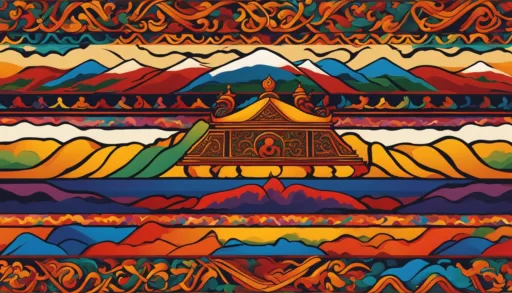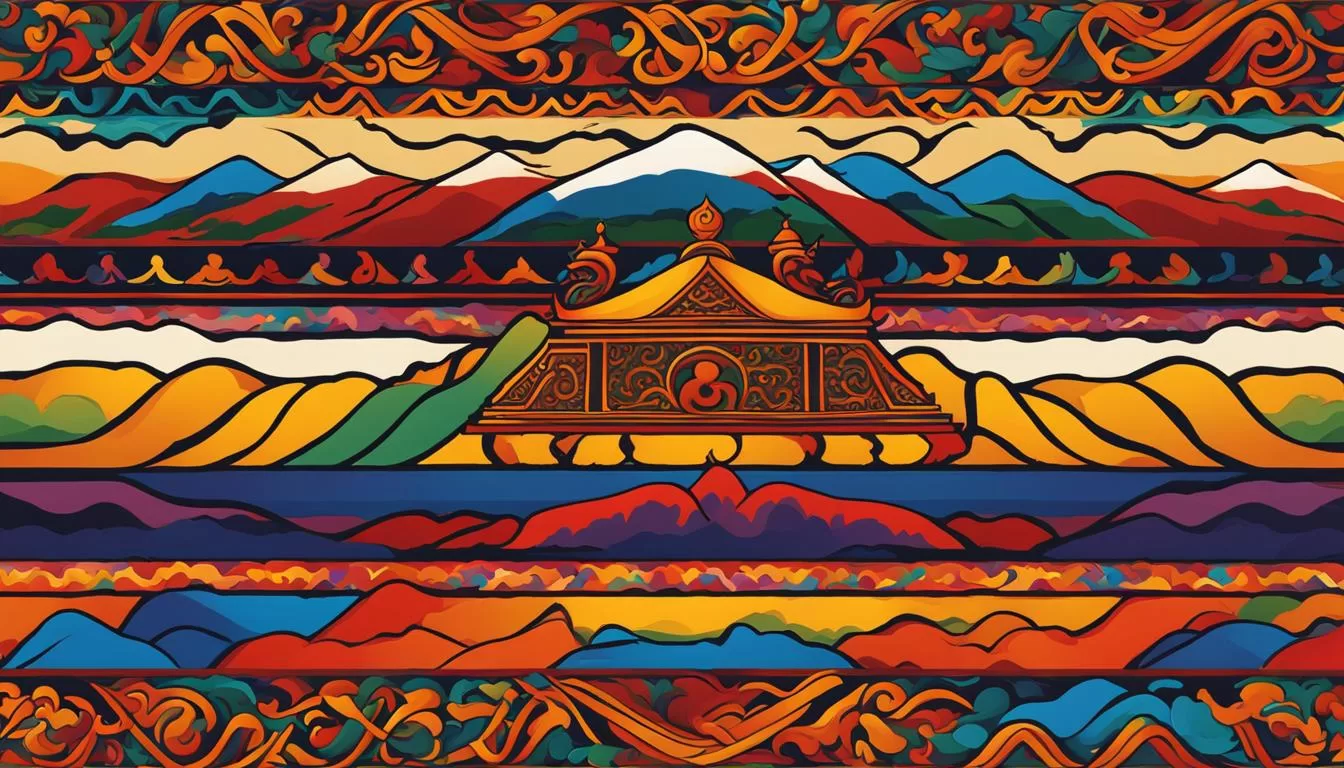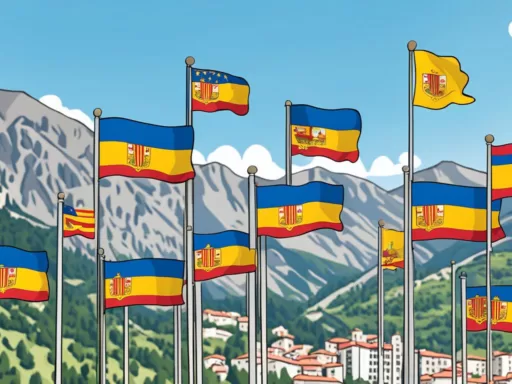The kingdom of Bhutan, a treasure nestled between the mighty peaks of the Himalayas, is a mosaic of languages that echo the cultural depth of this sovereign state. Within its mountain-enclosed borders, a symphony of tongues tells tales of the nation’s rich history and traditions. Among the languages spoken in Bhutan, Dzongkha is not only the Bhutan official language but also the heart of Bhutanese literary life. This language of diplomacy and scholarship coexists with a constellation of other indigenous and Bhutanese languages, each contributing to the nation’s linguistic pluralism.
As a country that embraces its linguistic diversity, Bhutan’s peoples converse in more than just the national tongue. Tshangla, Nepali, and various minority languages paint a vibrant linguistic landscape. Even global languages such as English and Hindi have found their place, connecting Bhutan to the wider world. From the whispers of the high mountain passes to the vibrant chatter of the bustling marketplaces, language is an integral thread woven into the fabric of Bhutanese society.
Key Takeaways
- Bhutan recognizes Dzongkha as its official language, with a unique literary tradition.
- Tshangla (Sharchop), Nepali, among others, enrich the tapestry of languages spoken in Bhutan.
- Bhutanese languages showcase the country’s cultural richness and diversity.
- English and Hindi serve as bridges, connecting Bhutan internationally.
- Geography significantly influences the dispersion and development of Bhutanese dialects and languages.
The Linguistic Landscape of Bhutan
Nestled in the heart of the Himalayas lies the vibrant country of Bhutan, a haven for a diverse array of languages that are as varied as its topography. It’s a place where the languages of Bhutan are not merely means of communication but also embodiments of rich cultural narratives and distinctive regional identities. The sheer variety of Bhutan dialects and the breadth of Bhutan language diversity paints a vivid picture of its complex ethnic tapestry.
While the kingdom officially celebrates Dzongkha as its national language, there is a fascinating ensemble of languages spoken in Bhutan that contribute to the pluralistic ethos of this nation. With every valley and peak, the linguistic map alters, giving us an invaluable glimpse into the intricate linguistic tapestry woven by the Bhutanese people over the centuries.
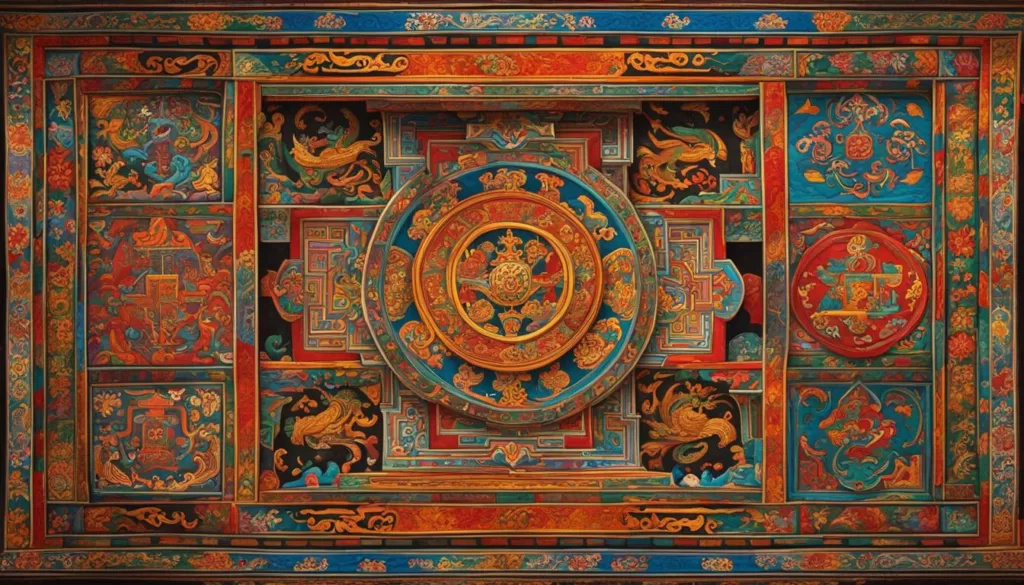
Understanding Bhutan’s Diverse Language Profiles
In the shadows of the towering Himalayas, we find a multitude of distinctive language families that collectively characterize the lingual framework of Bhutan. Among them, the predominant family is the Tibeto-Burman language family, which encompasses most of the languages spoken in Bhutan. This family presents a spectrum of languages ranging from the well-documented Dzongkha — with its noble literary tradition — to the lesser-known yet equally significant East Bodish languages, each with its own historical context and cultural significance.
The standout exception to the dominant Tibeto-Burman family is the Indo-Aryan language of Nepali, which brings forth a contrasting linguistic lineage to the country’s linguistic heritage. Such an ensemble not only reflects the current demographics but also the ebb and flow of cultural influences through Bhutan’s storied history.
The Role of Geography in Language Distribution
It is impossible to discuss the languages of Bhutan without acknowledging the profound impact of the country’s rugged geography. The topographical layout of Bhutan, characterized by its formidable mountains, isolating valleys, and meandering rivers, has played a fundamental role in the dispersal and preservation of its many local languages.
For instance, the prevalence of Central Bodish languages such as Dzongkha in the western regions of Bhutan illustrates how the sweeping valleys nestled between snow-capped peaks have become reservoirs of linguistic tradition. Meanwhile, the central heartland is a verdant canvas for the East Bodish languages, where communities enshrouded by the central ridges communicate in dialects like Bumthang and Kheng, further exemplifying the languages of Bhutan shaped by the very land upon which the people live.
Languages Spoken Bhutan: Dzongkha, The National Tongue

Amidst the dramatic backdrop of the Himalayas and deeply woven into the fabric of Bhutanese national identity, Dzongkha emerges as the cornerstone of the Bhutanese official language. Its rich history as the national tongue dates back to its adoption in 1971, marking an epoch of cultural amalgamation and linguistic pride for the kingdom. With an estimated 160,000 native speakers, this Central Bodish language’s evolution is etched across generations, now serving as a cornerstone in uniting the people of Bhutan.
History and Evolution of Dzongkha
From its roots as a Central Bodish language to becoming the embodiment of nationwide communication, Dzongkha has undergone a transformation that mirrors Bhutan’s historical journey. The adoption of Dzongkha among the diverse communities within Bhutan’s borders has seen it transcend regional divides, thereby cementing its role as a medium of collective expression and identity.
Dzongkha’s Place in Bhutan’s Culture
The prominence of Dzongkha within Bhutanese culture cannot be overstated. As the language of governance, academia, and administration, Dzongkha wields an influence that extends well beyond simply being a medium of dialogue. It encapsulates the past and propels the nation into the future, fostering a shared national pride. The language’s illustrious literary tradition continues to be a treasure trove of Bhutan’s intangible cultural heritage, celebrated in formal education and ingrained in daily life — an ever-present testament to the languages spoken in Bhutan.
Languages Spoken Bhutan:
- Dzongkha: The Bhutanese official language and symbol of cultural unity
- Tshangla: Spoken primarily in Eastern Bhutan, embodying regional dialectical diversity
- Nepali: Reflecting the country’s Indo-Aryan linguistic dimension
As Bhutan continues to preserve its linguistic ecosystem, Dzongkha remains at the forefront, harmonizing with other Bhutan official languages and dialects to form a melodious linguistic heritage unique to this Himalayan kingdom.
The Presence of Tibeto-Burman Languages in Bhutan
Delving into the heart of Bhutan’s linguistic heritage reveals the significant presence of Tibeto-Burman languages, each narrating a different facet of the nation’s past. The linguistic contours of Bhutan are largely shaped by two notable subgroups: the Central Bodish languages and the East Bodish languages. These tongues, though distinct in their own right, collectively contribute to the rich tapestry of languages spoken in Bhutan.
Central Bodish Languages: The Close Relatives of Dzongkha
The Central Bodish languages are vital threads in the linguistic fabric of Western Bhutan. In many ways, these languages are seen as the close relatives of Dzongkha, the Bhutanese official language. Historian George Van Driem characterizes languages such as Lakha, Brokpa, and Layakha as echoes of Bhutan’s agrarian and pastoral traditions. Encapsulating the lifestyle of yakherd communities, these Central Bodish languages form an integral part of Bhutan’s cultural and historical identity, resonating with the rhythms of rural life that has shaped Bhutanese society.
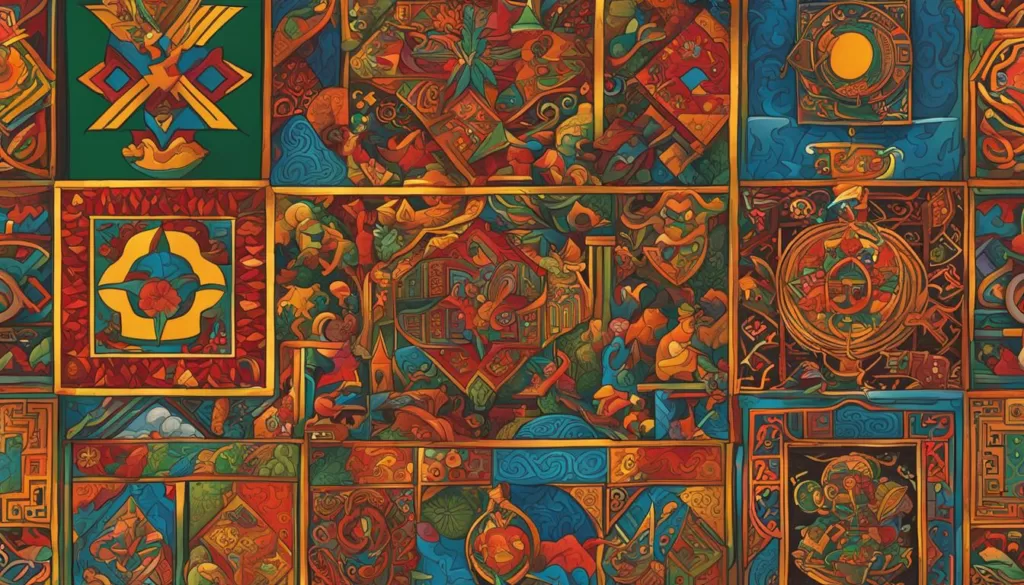
East Bodish Languages: The Linguistic Variety of Central Bhutan
Shifting focus to the heartland of Bhutan, the East Bodish languages stand out with their sheer linguistic variety and vitality. This group, independent from the Tibetic languages, showcases an assortment of dialects spread across the verdant valleys of Central Bhutan. With languages such as Bumthang, Kheng, and Dzala, spoken by tens of thousands, these East Bodish languages illustrate a profound connection between language and geography in Bhutan. Their distribution across the diverse terrains of central Bhutan emphasizes the nuanced and intricate nature of languages spoken in Bhutan, offering an authentic reflection of the country’s complex linguistic landscape.
The study of these languages not only enhances our understanding of the Bhutan dialects but also opens a window into the community dynamics and migratory patterns that have contributed to the linguistic diversity we see today.
Exploring Bhutanese Dialects and Minority Languages
The kingdom of Bhutan’s linguistic landscape is a dynamic tapestry, woven with a variety of Bhutanese languages that extends beyond the commonly recognized tongues. The existence of dialects and minority languages of Bhutan not only enriches the cultural milieu but also highlights the nuanced stories of the nation’s historical migrations and the indigenous communities inherent to it.
Amidst the more widely spoken Bhutanese dialects are the unique vocal imprints of languages such as Gongduk and ‘Ole, which resonate with the continuity of Bhutan’s ancient heritage. These minority languages are often local to isolated enclaves, allowing them to develop distinct characteristics which remarkably contribute to Bhutanese sociolinguistic diversity.
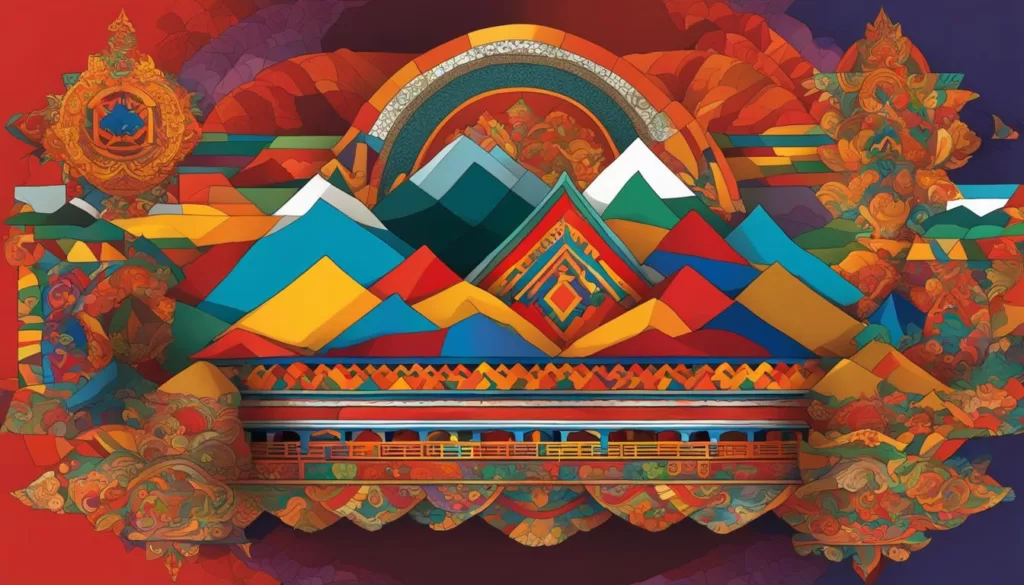
Exploring these languages offers insights into the rich complexities and intricate patterns of Bhutan’s social fabric. We witness the cultural tapestry depicted through the various languages that not only have formed through the ages but also tell the story of Bhutan’s evolution.
| Minority Language | Region | Estimated Speakers | Notes |
|---|---|---|---|
| Gongduk | Eastern Bhutan | 1,000 | Retains complex agreement system of Proto-Tibeto-Burman |
| ‘Ole | Central Bhutan (Black Mountains) | 1,000 | Considered the remnant of ancient East Bodish tribes |
| Lakah | Central Bhutan | 8,000 | Clustered linguistically with Brokkat and Brokpake |
| Chocangacakha | Eastern Bhutan (Kurichu Valley) | 20,000 | Close linguistic relation to Dzongkha |
| Layakha | Northwestern Bhutan | 1,100 | Indicative of yakherding communities |
Through patient and dedicated research into these languages of Bhutan, researchers and linguists alike unveil the interwoven nature of migration patterns, community dynamics, and the incredible resilience of cultural identity within the Kingdom of Bhutan.
- The distinctive sounds and structures of these languages stand as a testament to the Bhutanese tradition and way of life.
- These languages exemplify the adaptive strategies of communities responding to the varying geographic and climatic conditions of Bhutan.
- With precise and ongoing documentation, these minority languages hold keys to understanding the broader socio-cultural evolutions within the Himalayan region.
It is the commitment to recognizing and preserving such linguistic diversity that continues to make Bhutan a true exemplar of cultural richness and integrity in the face of a rapidly globalizing world.
Border Languages and Their Influence in Bhutan
The cultural vibrancy of Bhutan is significantly enriched by the border languages that permeate its perimeters. These languages reflect centuries of interaction and exchange with neighboring regions, contributing to Bhutan’s stature as a multi-lingual mosaic in the heart of the Himalayas. Known for their colorful interplay at the crossroads of trans-Himalayan trade routes and cultural exchanges, these languages echo the historical ties and ongoing interactions characteristic of this region.

Particularly illuminating is the role of the Lepcha language, traditionally spoken by the ethnic Lepcha people residing mainly in the neighboring areas of Sikkim and Darjeeling, with a presence in the southwest of Bhutan. Lepcha’s distinct script and rich oral literature highlight the cultural wealth of languages spoken in Bhutan, along with the nation’s ethnolinguistic diversity.
Further marking Bhutan’s lingual frontiers, the Sikkimese and Groma languages, both with Tibetan roots, are prevalent along the western borders adjoining Sikkim and the autonomous region of Tibet. These languages illustrate the deep-rooted influence of Tibetic cultures and are emblematic of the shared heritage that illustrates the Himalayan region’s interconnectedness.
Bhutan’s border languages bear witness to the ebb and flow of regional influence, as seen with the variance of languages such as the Toto language. While predominantly spoken in India’s Totopara by the Toto tribe, traces of this rich cultural voice can also be felt within Bhutan’s southern linguistic landscape.
The impact of these border languages on the nation extends beyond mere communication. They add layers to Bhutan’s social tapestry, accounting for the intricate blend of traditions, beliefs, and histories that define its identity. The dialogue amongst these languages at the fringes of Bhutan’s borders serves as a reminder of the country’s open but distinctive dialogue with its neighbors.
- Lepcha: Bridging culture and history between Bhutan and Sikkim
- Sikkimese and Groma: Reflecting Tibetan linguistic legacies
- Toto: A voice from the Indo-Bhutanese cross-cultural sphere
The tapestry of languages spoken in Bhutan is thus far more complex than it might initially appear. It is within the nuances of these border languages that we gain a richer understanding of the communal relationships and cultural exchanges that have shaped the Kingdom of Bhutan.
The Impact of Foreign Languages on Bhutan
As the Kingdom of Bhutan strides towards modernity, the influence of foreign languages on its cultural and linguistic fabric has become increasingly evident. Notably, English in Bhutan has risen to prominence, serving as a conduit for educational advancement, economic development, and global engagement. Simultaneously, Hindi’s cultural resonance has vibrated through the media and interpersonal relationships, further contributing to the polyglot character of languages spoken in Bhutan.
Understanding the subtleties of this linguistic evolution offers insight into the interactions between traditional Bhutanese values and the forces of globalization. With a careful balance, Bhutan has managed to champion both the preservation of its Bhutanese language policy and its vibrant Bhutan official languages, while also opening doors to international communication networks.
English and Hindi: Modern Languages of Communication
The ascension of English as a key player in Bhutan’s education system signifies a strategic move towards harnessing global knowledge and facilitating international discourse. In official and business domains, English operates as a prevalent lingua franca, easing the kingdom’s participation in global affairs. Likewise, Hindi has permeated the Bhutanese societal landscape, energized by its shared cultural and historical threads with neighboring India.
Both English and Hindi have made substantial inroads into the daily lives of Bhutanese citizens, shaping the way individuals communicate, consume media, and engage with the outer world. This mosaic of linguistic influences has, in turn, contributed to Bhutan’s dynamic identity and its capacity for cross-cultural dialogue.
Understanding the Bhutanese Language Policy and Education System
The Bhutanese government’s forensic approach to language policy has effectively addressed the challenges of modernization while honoring the country’s linguistic diversity. At the heart of this policy is the elevation of Dzongkha as the national beacon of unity alongside a strong educational emphasis on English proficiency. This duality of focus reflects the nation’s objective to foster social cohesion and intellectual growth.
In 1991, the inception of the Roman Dzongkha transcription system underlined the state’s commitment to a refined national identity. It has since become a pivotal instrument in streamlining the learning process and promoting the instructional development of Bhutan’s affluent linguistic portfolio. Through these concerted efforts, the Bhutanese educational framework plays an integral role in safeguarding native dialects while skilfully integrating English into the curriculum, thus ensuring the nation’s languages continue to flourish in contemporary contexts.
Conclusion
In the serene landscape of the Himalayas, Bhutan paints a vivid picture of cultural richness, best reflected in the tapestry of languages spoken Bhutan. A country that venerates its Bhutan language diversity, it has mastered the intricate dance between preserving a bountiful linguistic heritage and embracing the winds of global change. With Dzongkha at its core, Bhutan has not only united its people under a shared identity but has also given voice to the regional dialects and minoritized languages that narrate its history.
Through thoughtful language policies and a robust educational framework, Bhutan has skilfully navigated the complexities of nurturing its native languages while opening its arms to English and other international tongues. This strategic bilingualism ensures that while the roots are local, the reach is global. It’s this embracing ethos that cements Bhutan’s international participation without sacrificing the vibrancy of its indigenous voices.
Bhutan’s approach serves as a shining beacon to the world, demonstrating how linguistic diversity can be harmoniously balanced with modernity. As Bhutan continues to stride forward, it does so with the symphony of its languages in tow — from the high peaks echoing with Dzongkha to the gentle murmurs of its minority languages in the valleys — all integral to the country’s enduring cultural legacy.
FAQ
What are the official languages spoken in Bhutan?
Dzongkha is the official language of Bhutan. It is used in government and as the medium of instruction in schools. English is also widely used, especially in education and business.
What is the linguistic landscape of Bhutan like?
Bhutan’s linguistic landscape is diverse, with over 24 languages that belong mostly to the Tibeto-Burman language family, representing the cultural richness and geographic variety of the country.
How does geography affect language distribution in Bhutan?
The mountainous terrain of Bhutan creates isolated communities, each with its own linguistic characteristics. Central Bodish languages are spoken mostly in the western parts of Bhutan, while East Bodish languages are found in central regions.
How many people speak Dzongkha in Bhutan?
Approximately 160,000 native speakers use Dzongkha. It also acts as a lingua franca amongst various linguistic groups in Bhutan.
What role does Dzongkha play in Bhutan’s culture?
Dzongkha is not only the national language of Bhutan but also a symbol of Bhutanese heritage. It’s used in the government, education, and serves to promote national unity.
Are there languages closely related to Dzongkha in Bhutan?
Yes, there are Central Bodish languages like Lakha, Brokpa, and Layakha that are closely related to Dzongkha and reflect Bhutan’s pastoral yakherd communities’ traditions.
What are the East Bodish languages spoken in Bhutan?
Bumthang, Kheng, and Dzala are examples of East Bodish languages with tens of thousands of speakers, prevalent in the central parts of Bhutan.
Can you tell me about Bhutanese dialects and minority languages?
Bhutan has a range of dialects and minority languages such as Gongduk and ‘Ole that are spoken by smaller communities and represent the country’s rich linguistic diversity.
What border languages influence the languages spoken in Bhutan?
Languages such as Lepcha, Sikkimese, Groma, and Tibetan languages from the north have influenced Bhutanese languages, especially in regions bordering other countries.
What impact do foreign languages like English and Hindi have on Bhutan?
English is widely used in education and business, while Hindi is prevalent in media consumption. Both languages contribute to Bhutan’s connection with the global community and its multicultural environment.
What is the Bhutanese language policy and how does it affect education?
The Bhutanese language policy promotes Dzongkha as the national language, while English is the primary medium for education. This dual-language approach ensures linguistic preservation as well as global engagement.
